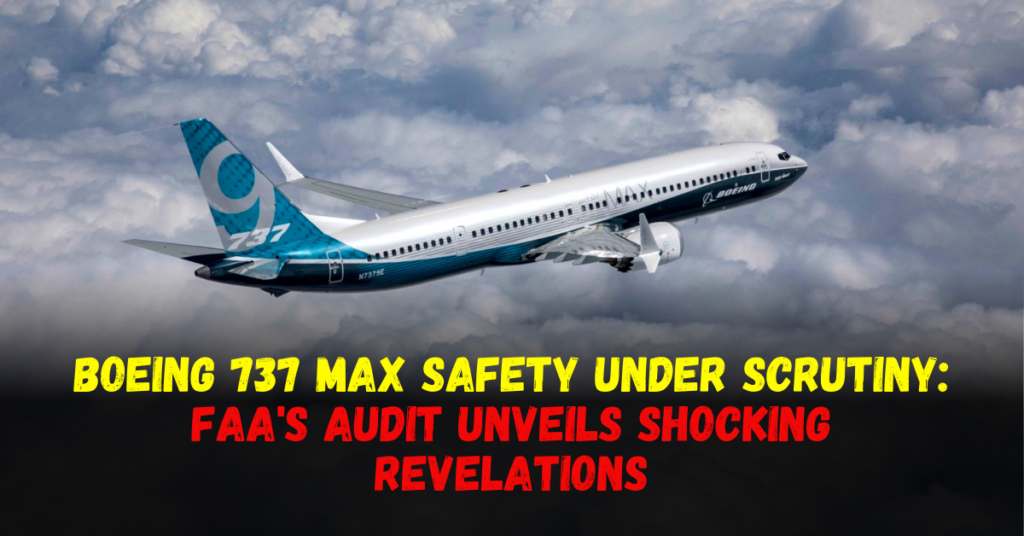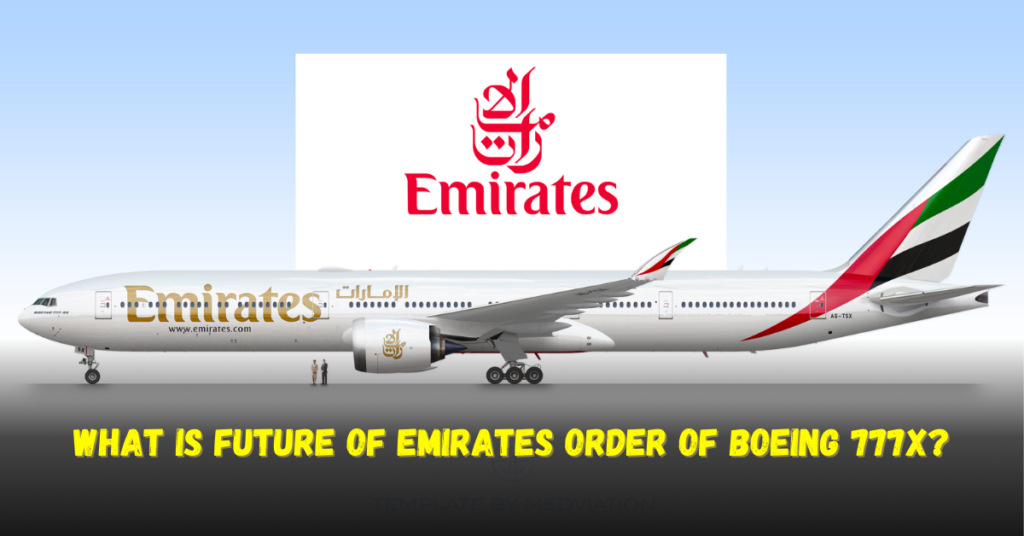If you’ve been following aviation news, you’re likely aware of the January 5th incident involving an Alaska Airlines Boeing 737 MAX 9. This incident, which resulted in an emergency landing, prompted an extensive audit conducted by the Federal Aviation Administration (FAA) into Boeing’s 737 MAX production processes. However, the audit uncovered more than just procedural flaws; it unveiled a series of alarming revelations that have cast a shadow over Boeing’s reputation.

FAA’s Audit of Boeing 737 MAX Production Processes
The New York Times, in a report published on March 12, revealed startling statistics from the FAA’s audit. Out of 89 tests conducted, the Boeing aircraft in question failed a staggering 33. This revelation sent shockwaves through the aviation industry and raised serious questions about Boeing’s manufacturing standards. The audit aimed to assess the safety and reliability of the aircraft’s components and systems, with a focus on identifying any potential weaknesses that could compromise passenger safety.
Details of Boeing’s Failures in the Audit
Among the failures highlighted in the audit, one significant issue revolved around the door plug of the 737’s fuselage. Additionally, Kansas-based fuselage supplier Spirit AeroSystems fared poorly in their audits, passing only six out of 13, with several problems identified in the door plug component installation. The audit findings underscored the need for Boeing and its suppliers to address systemic issues in their production processes and quality control measures.
Spirit AeroSystems’ Audit Results
Spirit AeroSystems’ failure to meet audit standards raised concerns about the company’s production processes. The audits uncovered deficiencies in crucial components like cargo doors and cockpit windows, indicating systemic issues within the supply chain. The company’s performance in the audits highlighted the need for enhanced oversight and accountability measures to ensure the integrity and safety of Boeing aircraft components.
See More: Analyzing the LATAM Airlines Boeing 787 Flight Incident: What Went Wrong?
FAA’s Concerns Regarding Boeing’s Safety Culture
Beyond procedural shortcomings, the audit shed light on a deeper concern: the existence of a significant “disconnect” between Boeing’s senior management and engineering teams regarding safety protocols. This misalignment jeopardizes the integrity of safety systems and raises questions about Boeing’s commitment to prioritizing safety over production targets. The FAA’s investigation revealed systemic flaws in Boeing’s safety culture, which must be addressed to prevent future safety incidents.
FAA’s Response and Intended Actions
In response to the audit findings, the FAA has pledged to thoroughly investigate the panel’s recommendations and take decisive action. The agency has emphasized its commitment to upholding the highest safety standards and ensuring that Boeing implements necessary reforms to address the identified deficiencies. The FAA’s response underscores the importance of regulatory oversight in safeguarding passenger safety and holding manufacturers accountable for maintaining rigorous safety standards.
Boeing’s Reaction to the Panel Report
Boeing, in its official response, acknowledged the need for improvement in its safety culture. While highlighting steps taken to foster a culture of safety, the company recognized the ongoing challenges and pledged to learn from the audit findings to enhance its safety and quality programs. Boeing’s commitment to addressing the audit findings is crucial in rebuilding trust with regulators, customers, and the flying public.
See More: United Airlines’ Fleet Plan Shakeup: What’s Behind the Removal of Boeing 737 MAX 10?
Public Perception of Boeing’s Situation
The revelation of systemic flaws in Boeing’s production processes has undoubtedly eroded public trust in the company’s ability to prioritize safety. Rebuilding this trust will require transparent communication, concrete actions to address the identified issues, and sustained efforts to demonstrate a genuine commitment to safety. The aviation industry’s response to Boeing’s situation will play a significant role in shaping public perception and restoring confidence in the safety of Boeing aircraft.
The Aviation Industry’s Response
The FAA’s audit findings have reverberated throughout the aviation industry, prompting stakeholders to reevaluate safety protocols and regulatory frameworks. Airlines, regulators, and industry organizations have expressed concern over the implications of Boeing’s safety lapses and the need for robust oversight to prevent similar incidents in the future. The aviation industry’s response will be instrumental in driving reforms and ensuring the continued safety of air travel.
Future Prospects for Boeing
Despite the challenges posed by the FAA’s audit findings, Boeing has an opportunity to rebuild trust and strengthen its safety culture. By implementing comprehensive reforms, enhancing transparency, and prioritizing safety over commercial interests, Boeing can regain the confidence of regulators, customers, and investors. However, restoring trust will require sustained efforts and a commitment to accountability and continuous improvement.
Conclusion
Boeing’s safety culture has come under intense scrutiny following the FAA’s audit, which uncovered significant deficiencies in its production processes. The path to restoring public trust will be long and arduous, requiring concerted efforts from Boeing, regulatory agencies, and industry stakeholders. However, prioritizing safety over expedited production is essential to ensure the continued safety of air travel and uphold the integrity of the aviation industry.
FAQs
- Is it safe to fly on Boeing 737 MAX aircraft given these revelations?
- The FAA’s audit findings underscore the need for Boeing to address safety concerns rigorously. Passengers should closely monitor updates from regulatory authorities and Boeing regarding the implementation of corrective measures.
- What steps is Boeing taking to improve its safety culture?
- Boeing has committed to reviewing the audit findings and implementing necessary reforms to enhance its safety and quality programs. This includes fostering a culture that prioritizes safety and encourages open communication among employees.
- How will the FAA ensure that Boeing complies with its recommendations?
- The FAA has stated its intention to thoroughly investigate the panel’s recommendations and take appropriate action to ensure Boeing’s compliance. This may involve increased oversight and monitoring of Boeing’s production processes.
- What impact will these revelations have on Boeing’s reputation in the long term?
- Rebuilding trust in Boeing’s brand will require sustained efforts to demonstrate a genuine commitment to safety and transparency. The company must prioritize safety over commercial interests to regain public confidence.
- How can passengers contribute to ensuring their safety when flying on Boeing aircraft?
- Passengers can stay informed about the latest developments regarding Boeing’s safety measures and regulatory oversight. Additionally, reporting any safety concerns or incidents during flights can help improve aviation safety standards.
Thanks for Visiting Us In Focus!
For DMCA complaints, please visit our DMCA Form / Report Content
Follow us on other platforms as follows:
Facebook – https://www.facebook.com/usinfocus
X (formerly Twitter) – https://twitter.com/usinfocusdotcom


